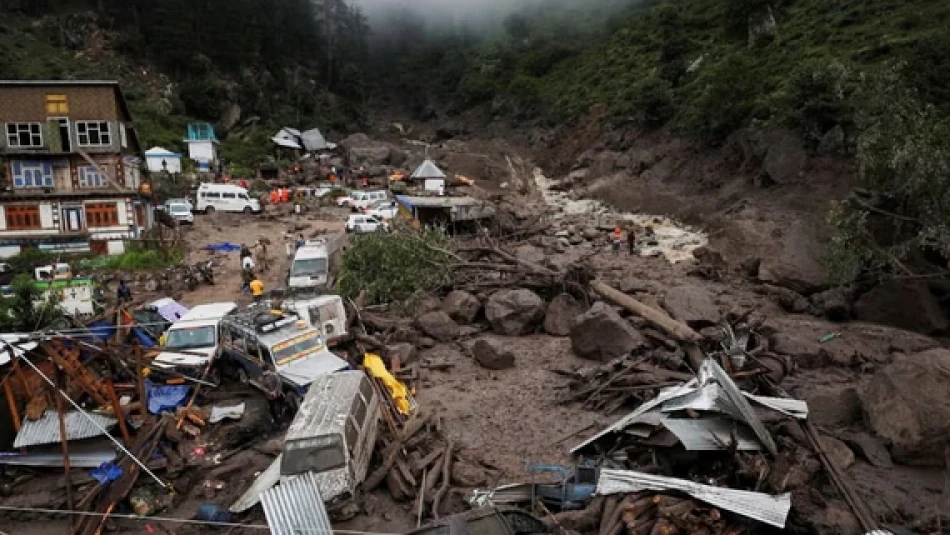
Devastating Floods Claim 60 Lives in India's Kashmir Region
Himalayan Disasters Expose India's Growing Climate Vulnerability as Monsoon Extremes Intensify
At least 60 people have died and over 100 remain missing after sudden torrential rains triggered devastating floods and landslides in Indian-administered Kashmir, marking the second major Himalayan disaster in just over a week. The tragedy underscores India's mounting struggle with increasingly erratic monsoon patterns that are turning the country's mountainous regions into climate disaster zones.
Kashmir Village Swept Away by Mudslides
The village of Chasoti in Indian-administered Kashmir was engulfed by cascading mudslides and flash floods on Thursday, trapping visitors who had gathered for lunch before planning to climb the nearby hills. The disaster struck with little warning, leaving rescue workers to dig through debris with shovels, ropes, and makeshift bridges on Friday.
Scattered bags, clothing, and personal belongings mixed with broken electrical poles painted a grim picture of the destruction. One rescue worker told Asia International News Agency that between 100 and 150 people may be buried under the debris, suggesting the death toll could rise significantly as recovery efforts continue.
A Pattern of Himalayan Catastrophes
This latest disaster follows closely on the heels of another devastating event just over a week ago, when floods and mudslides completely destroyed a village in Uttarakhand state, also located in the Himalayan region. The rapid succession of these tragedies highlights a troubling trend across India's northern mountain belt.
Prime Minister Narendra Modi acknowledged the escalating crisis during his Independence Day speech marking the country's 79th anniversary, stating: "Nature is testing us. In the past few days, we have had to deal with landslides, frost waves, and other natural disasters."
Climate Change Amplifies Monsoon Risks
The Himalayan region has become increasingly susceptible to extreme weather events as climate change intensifies monsoon patterns. Unlike the gradual, predictable rains of previous decades, today's monsoons often arrive as concentrated bursts of extreme precipitation that overwhelm the region's fragile geological structure.
The timing of these disasters during peak tourist season compounds the tragedy, as many victims were visitors unfamiliar with local terrain and evacuation routes. Kashmir's economy heavily depends on tourism, making these areas particularly vulnerable when disasters strike during busy periods.
Infrastructure Gaps Leave Communities Exposed
India's mountainous regions face unique challenges in disaster preparedness due to difficult terrain, limited road access, and sparse early warning systems. The fact that rescue workers are still relying on basic tools like shovels and ropes demonstrates the infrastructure gaps that leave remote communities particularly vulnerable.
Compared to countries like Japan or Switzerland, which have invested heavily in mountain disaster preparedness, India's Himalayan states lack comprehensive landslide monitoring systems and rapid response capabilities. This infrastructure deficit becomes deadly when extreme weather events strike with increasing frequency and intensity.
Economic and Strategic Implications
Beyond the immediate human tragedy, these recurring disasters pose significant economic challenges for India. Kashmir's tourism industry, already affected by political tensions, faces additional pressure from climate-related safety concerns. The region's strategic importance as a border area with Pakistan and China adds another layer of complexity to disaster response and recovery efforts.
The increasing frequency of such events will likely force India to allocate greater resources to climate adaptation and disaster preparedness, potentially affecting other development priorities. As extreme weather becomes the new normal, the country must balance immediate rescue and relief operations with long-term infrastructure investments to protect vulnerable mountain communities.
Most Viewed News

 Layla Al Mansoori
Layla Al Mansoori






